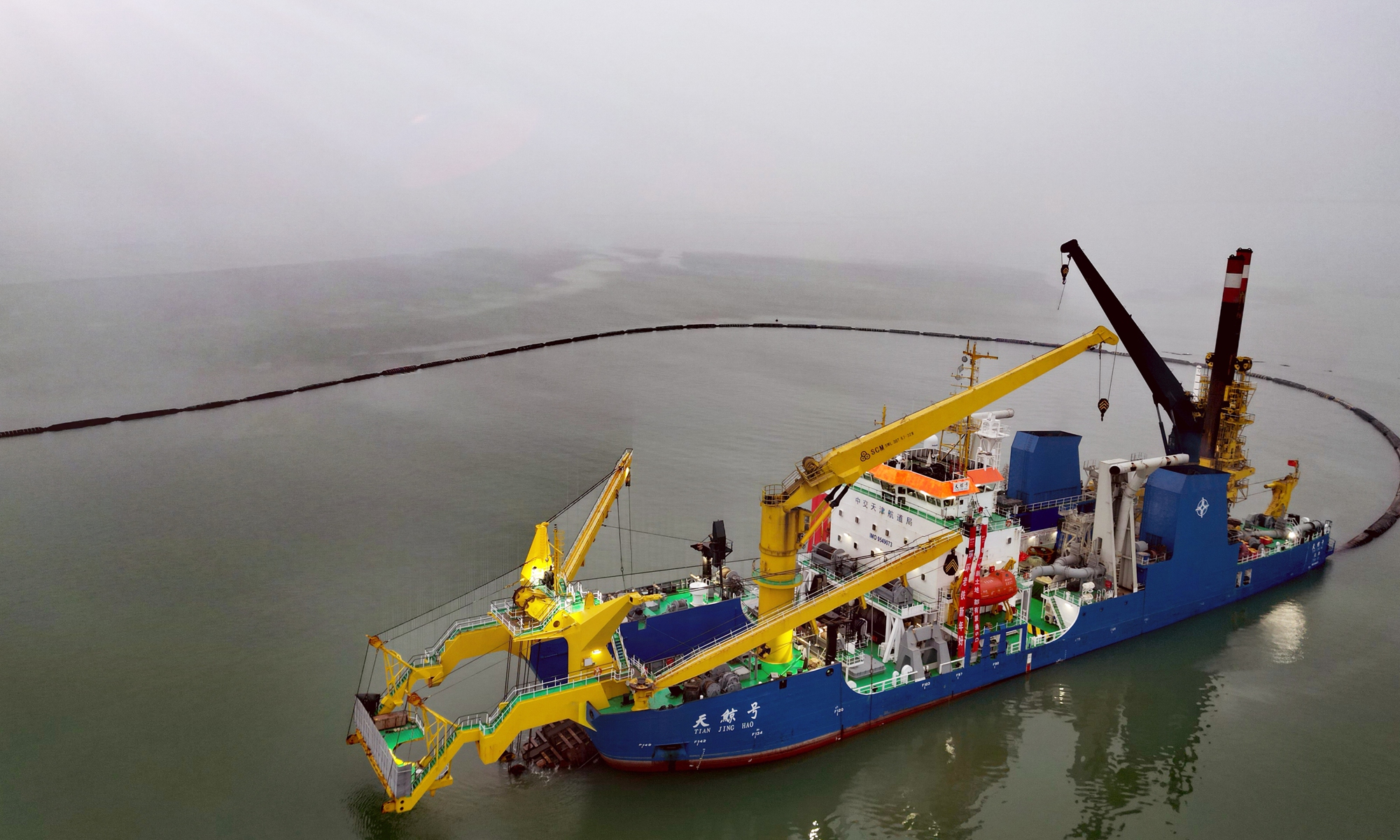
The Tianjing pipes sediment from the ocean floor onto shore. Photo: Shi Ding/GT
On the harshest winter day thus far in Lianyungang's Ganyu port with a snow storm rocking moored ships unable to sail due to the inclement weather, the Tianjing, or Sky Whale, remained still.China's top self-propelled cutter-suction dredger, once the most powerful of its kind in Asia, remained operational in its usual orderly fashion, its fierce and gigantic reamer stabbing into the seabed, crushing sediment and rock into pieces, the product of which was transported through pipelines to the shore a few kilometers away. There, a new stretch of land was slowly being formed.
After 24 hours of uninterrupted operations, the Tianjing had created a stretch of land of about 30,000 square meters, which is equivalent to four soccer fields.
After the dredged waterway and newly created stretch of land are properly utilized, new sea passageways will be opened for Lianyungang in East China's Jiangsu Province, which is also known as the eastern bridgehead of the new Eurasian Continental Bridge.
This extension project in the Ganyu port area, a part of the Lianyungang port, is the first display by the Tianjing after it successfully completed its five-year construction mission along Belt and Road countries.
Tianjing, which became operational in 2010, is the first self-propelled cutter-suction dredger independently built by China. At that time, it was the most powerful of all such vessels in Asia, and third in global rankings.
In the last 13 years, Tianjing has made great contributions to China's land formation, and has also made outstanding contributions to construction projects under the Belt and Road Initiative (BRI).
Recently, while the Tianjing was garrisoned at a domestic port, the Global Times reporters boarded the ship to witness the true majesty of this gigantic sea monster, and to feel the strength of China's high-end equipment as well as the Chinese wisdom behind it.
'Sea monster' with steel teeth
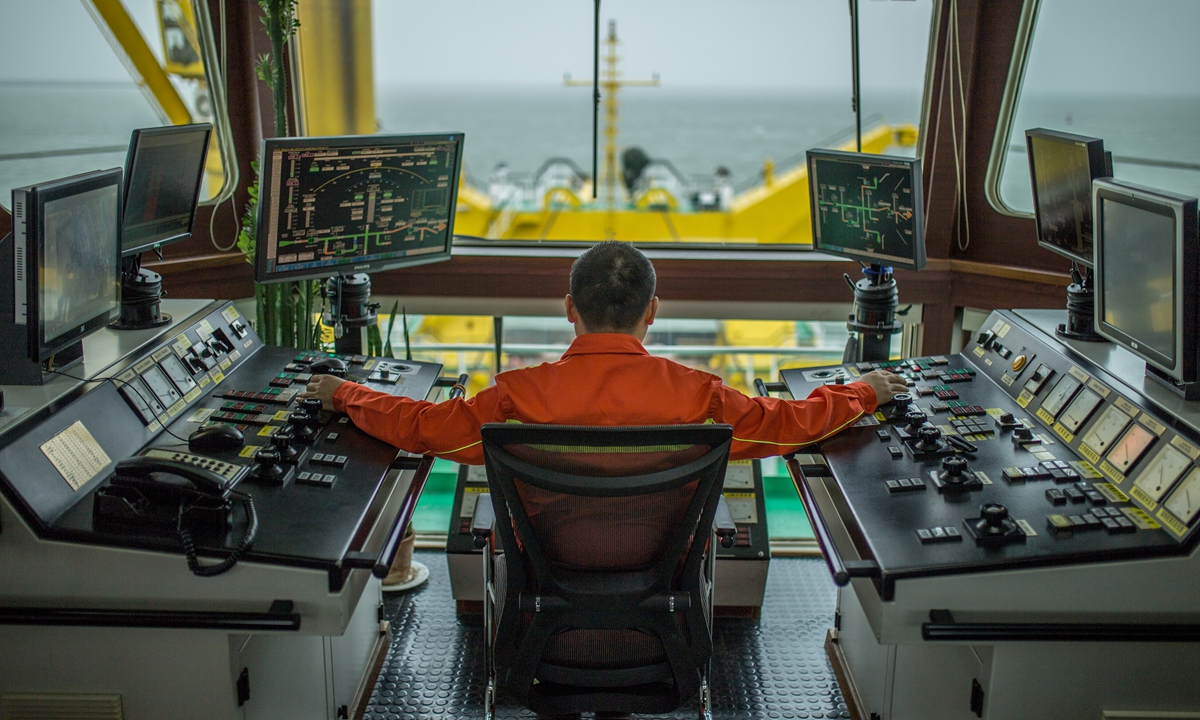
Ran Gangqiang, chief officer of the Tianjing operating the digging system. Photo: Shan Jie/GT
The assemblage of the sea monster, the Tianjing, started on April 28, 2008, under the investment and technical expertise of the Tianjin International Marine Engineering Co. Ltd. The assemblage was completed on January 19, 2010.Ran Gangqiang, the chief officer of the Tianjing, has witnessed the course of the sea monster over the last decade. In 2009, Ran, who had just joined the company after graduating from university, boarded the Tianjing and was promoted from a mere intern crew member to his current position.
At the bridge on the topmost floor of the Tianjing cabin, Ran was focused on dredging system operation modulation. On his "throne" directly in the front of the bridge, with his arms spread out, his hands constantly adjusted and tweaked systems on the consoles on both sides of him. With a panoramic view to boot, Ran could also assess the external working conditions for the Tianjing's core equipment.
According to Ran, the Tianjing dredger has a total length of 127.5 meters, a molded width of 23 meters, an immersion depth of 6 meters, a design speed of 12 knots, a total installed power capacity of 20,020 kilowatts, and a maximum digging depth of 30 meters.
During the loading operation, the Tianjing can discharge the mixture of sea sand and seawater at a distance of up to 6,000 meters at a rate of 4,500 cubic meters per hour, and the sea sand to be loaded can reach more than 100,000 cubic meters per day. It is also equipped with the most powerful excavation system in Asia, with a reamer power of 4,200 kilowatts to avoid damage from coral reefs, which would affect work output.
In addition to excellent hardware infrastructure, the Tianjing also has a smart "brain" - it is equipped with the most advanced integrated automatic dredging control system in the world, so that it can ensure the high efficiency of expensive dredging machines with full consideration for safety, Ran introduced.
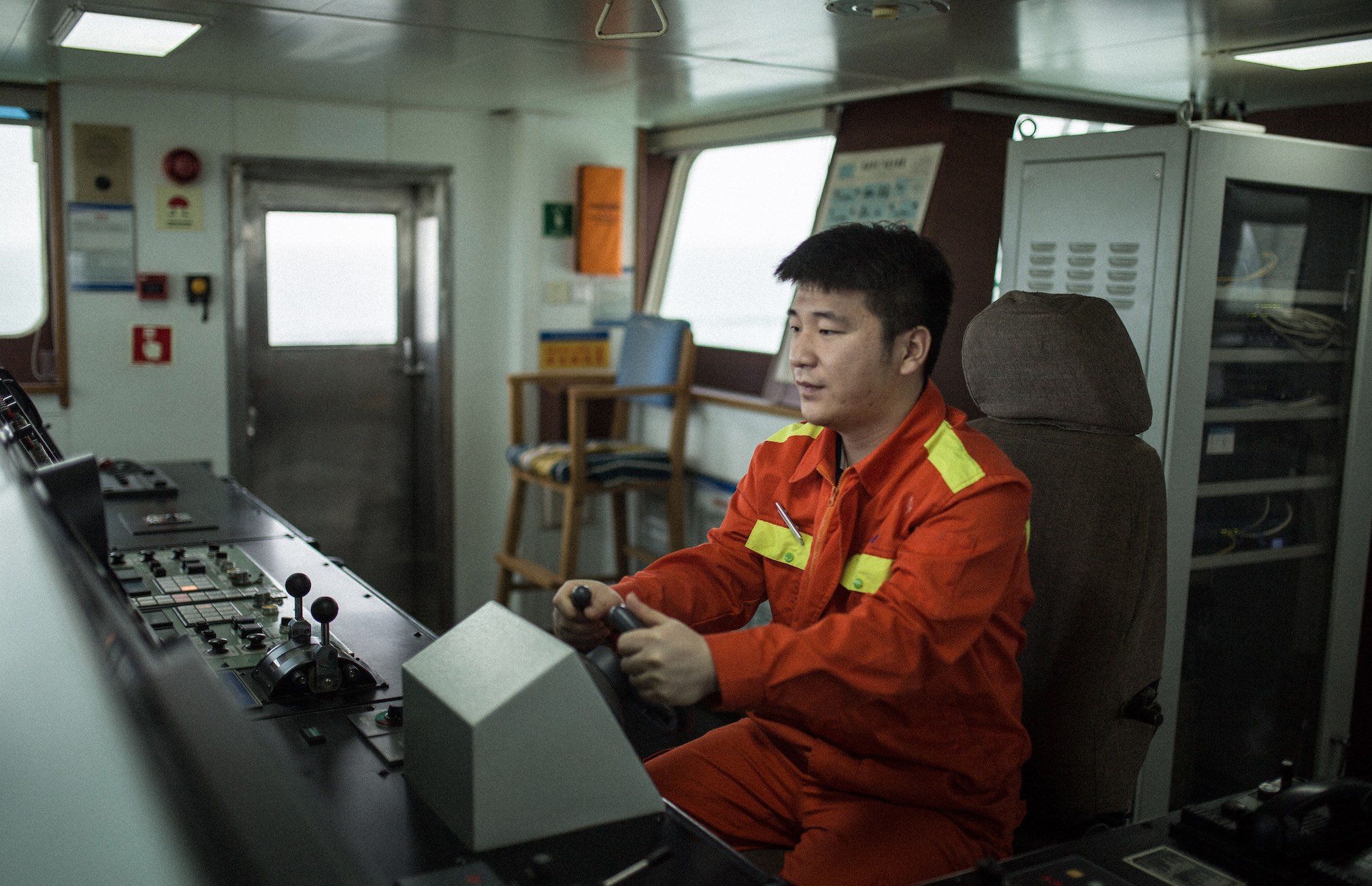
Crew members of Tianjing, or Sky Whale, a self-propelled cutter-suction dredger, are running the vessel during a task off the coast of Lianyungang, East China’s Jiangsu Province on January 14, 2023. Photo: Shan Jie/GT
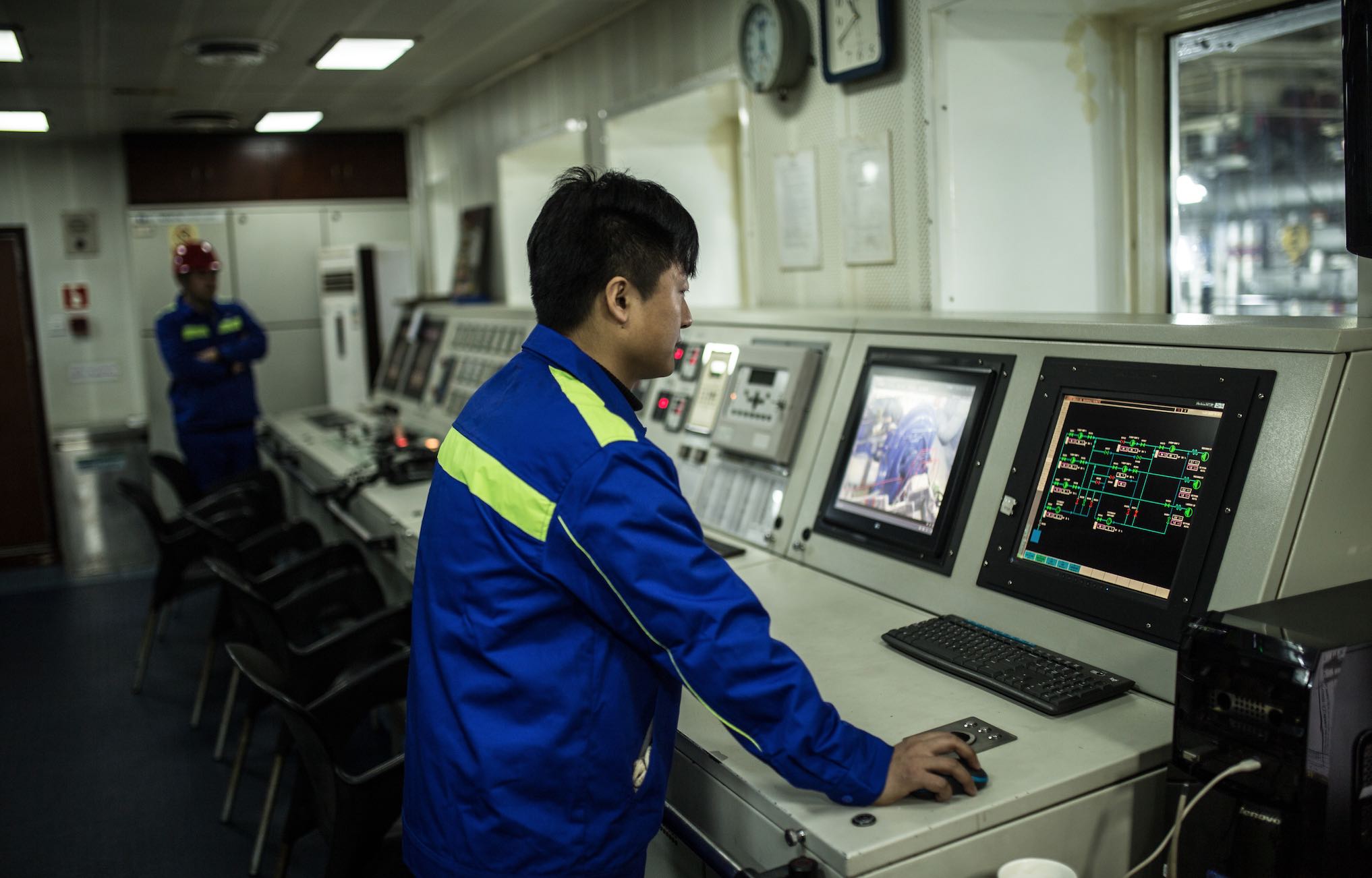
Crew members of Tianjing, or Sky Whale, a self-propelled cutter-suction dredger, are running the vessel during a task off the coast of Lianyungang, East China’s Jiangsu Province on January 14, 2023. Photo: Shan Jie/GT
On the deck of the Tianjing, Zhang Xu, deputy secretary of the Tianjing's Party branch, introduced the three iconic "weapons" on the vessel.
One of them is a giant scarlet-colored reamer, which is nicknamed "Dragon Fruit" by netizens. It is the sharp "iron and steel teeth" of the Tianjing, driven by a 4,200-kilowatt variable frequency motor, which can go deep into the seabed to crush hard rocks, Zhang said.
"Secondly, we have two transversal winches, which are the 'arms' of the Tianjing," Zhang said, "By waving the winches, the Tianjing is able to create a fan-shape motion with a width of 100 meters."
Lastly, the Tianjing also has two "long legs," which are responsible for the steady positioning of the vessel. Thanks to the "legs," the Tianjing is able to operate in strong wind and waves, or shallow waters by planting the legs into the seabed soil.
Moreover, the 36 crew members on board also perform different duties - from the second engineer who ensures the normal operation of the engine of the Tianjing, to the electrical engineer who monitors the safety and stability of the Tianjing's power supply, or its "nervous system," as well as every sailor, and even the chef. Together, the crew ensures the daily operation of the Tianjing, allowing the vessel to shuttle between the oceans, give full play to its powerful capabilities, and complete various missions.
Top machinery to perform duties
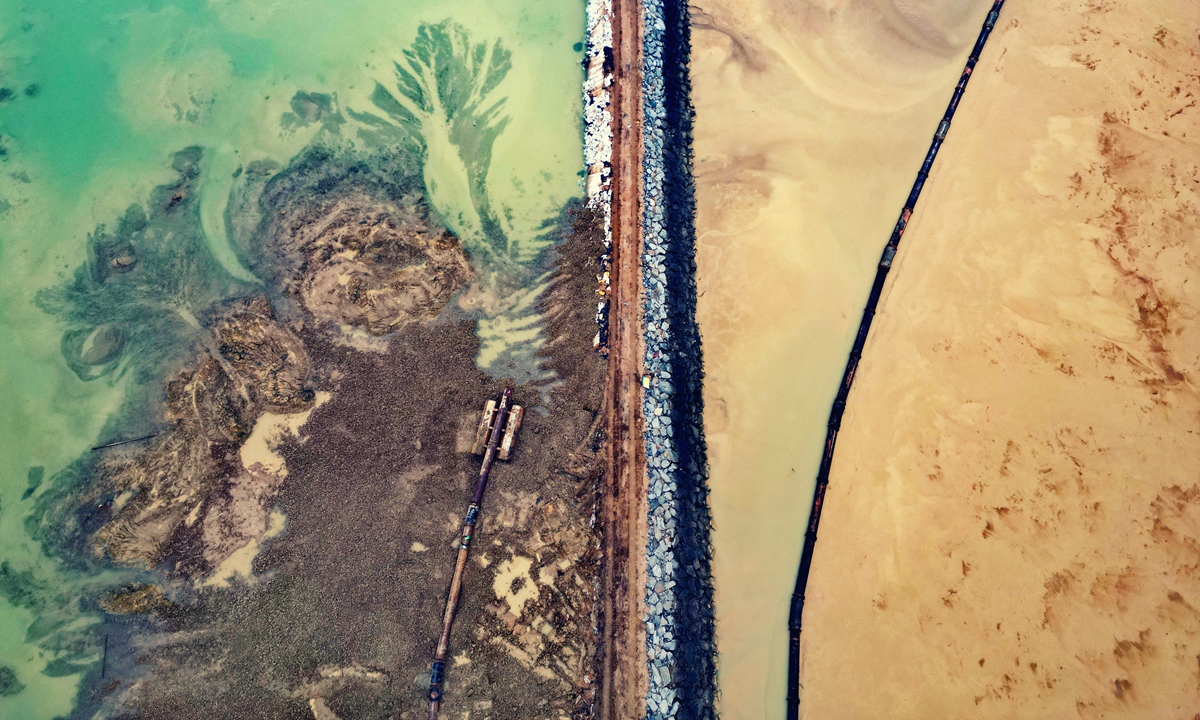
Soil and sand are transported through pipes to form new land. Photo: Shi Ding/GT
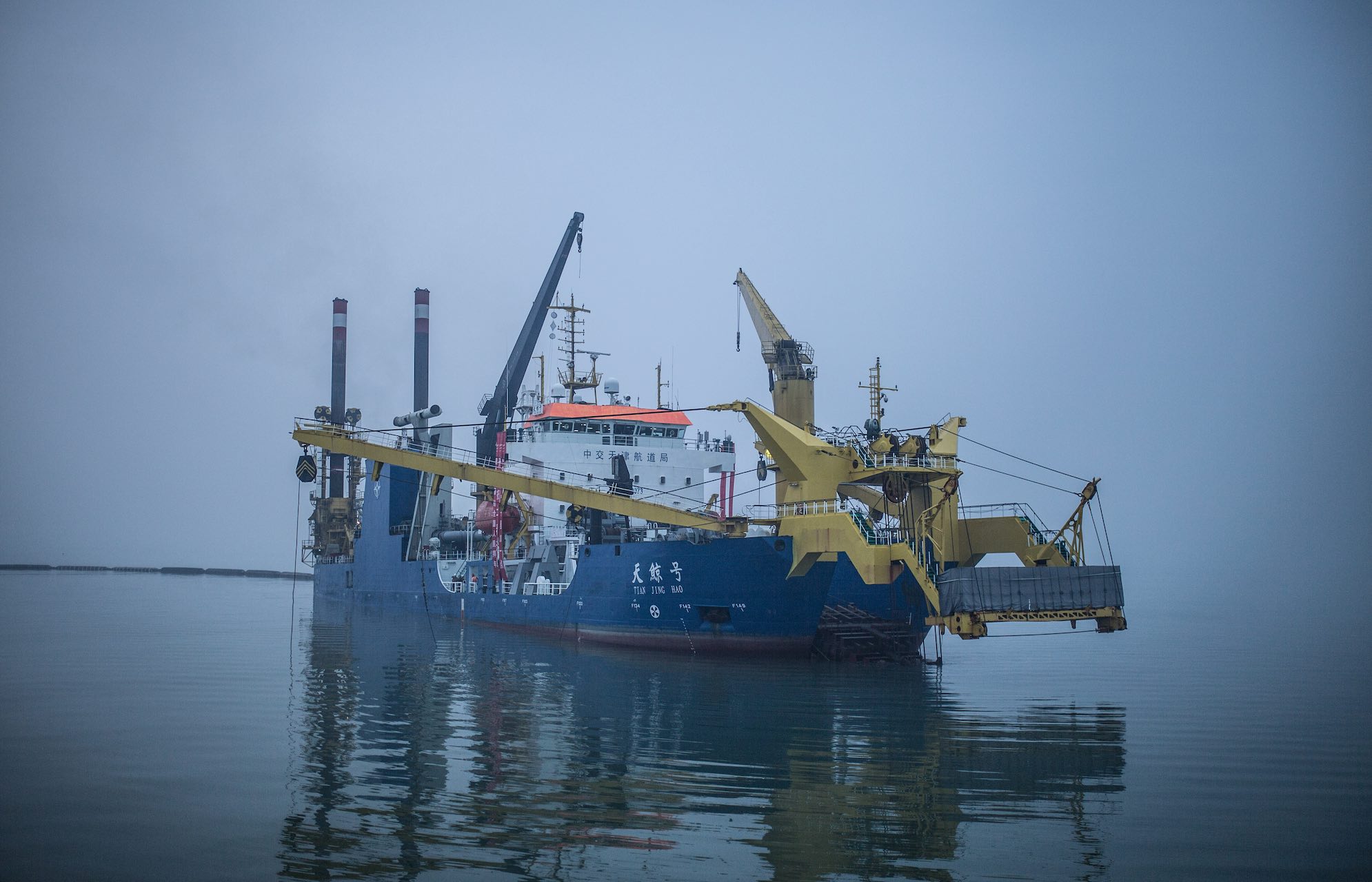
Crew members of Tianjing, or Sky Whale, a self-propelled cutter-suction dredger, are running the vessel during a task off the coast of Lianyungang, East China’s Jiangsu Province on January 14, 2023. Photo: Shan Jie/GT
A week before the Chinese New Year, more than 20 million web users from all over the world watched a live stream online, which showed the work of Tianjing.
During the marathon live streaming session, the camera set up at the reclamation area provided a glimpse into how a new piece of land was formed by the Tianjing. "It is full of technology!" "Happy New Year, Tianjing!" Netizens posted during the live stream.
Despite the harsh weather, during the entire formation process of the Lianyungang project, the Tianjing also met with many difficulties such as complex soil quality at the formation sea area, difficulty in long-distance transportation of dredged soil, as well as a tight formation schedule, but the mighty vessel overcame these challenges with high efficiency and without compromising on quality.
In fact, this is far from the most difficult job that the Tianjing has ever undertaken. Since its completion, it has shouldered heavy responsibilities and sailed at the forefront of China's land reclamation efforts.
"The ship and equipment are often put to the test, and the crew members also experience multiple physical and psychological challenges," Ran, the chief officer, elaborated.
"When working in remote sea areas, due to the distance from the land, particularly when we encounter extreme weather, the supply ship might not arrive for a month. Due to the lack of fresh water, we can only collect rainwater for use at the worst of times. Even so, the crew still persists in our work," he said.
The Tianjing has never stopped being the stuff of legends at sea with its incredible capability. Since it came into operation in 2010, the Tianjing has played an important role in many engineering construction projects, and has won heavyweight honors such as the National Science and Technology Progress Award.
'Chinese whale' on Belt and Road
This year marks the 10th anniversary of the BRI. In the last decade, in addition to serving major domestic projects, the Tianjing has also played an important role in cooperation and development under the initiative, helping with infrastructure construction along the BRI's route and benefiting regional economic development.
In 2017, the Tianjing set sail to go overseas. For five years, the "Chinese whale" sailed tens of thousands of nautical miles along the "Belt and Road," from the hot equatorial coast to the freezing remoteness of the near-Arctic. The vessel and its crew have experienced tests of heat, cold, giant waves, and even terrorist attacks.
The first overseas stop made by the Tianjing was to Port Tema, which is the largest port in Ghana, and an important cargo distribution center and hub port in West Africa. After the completion of the new container terminal, the port is expected to provide the world with more high-quality and convenient port infrastructure and service.
However, when the Tianjing arrived at the construction site, the crew found that the construction conditions were extremely poor. The soil in the construction sea area was rock with a high degree of hardness, which meant that ordinary dredgers would be helpless in the face of such geological conditions.
"At that time, in Asia, only the Tianjing had the capability to deal with such hard rocks, which is why we were chosen to be there," Ran told the Global Times.
During the construction, the Tianjing showed its sharp reamer and went deep into the seabed to break up the hard rock. After seeing the shattered rocks ejected from the pipe nozzle, local officials were surprised and delighted, dubbing the Tianjing's reamer "the sharpest teeth in the world."
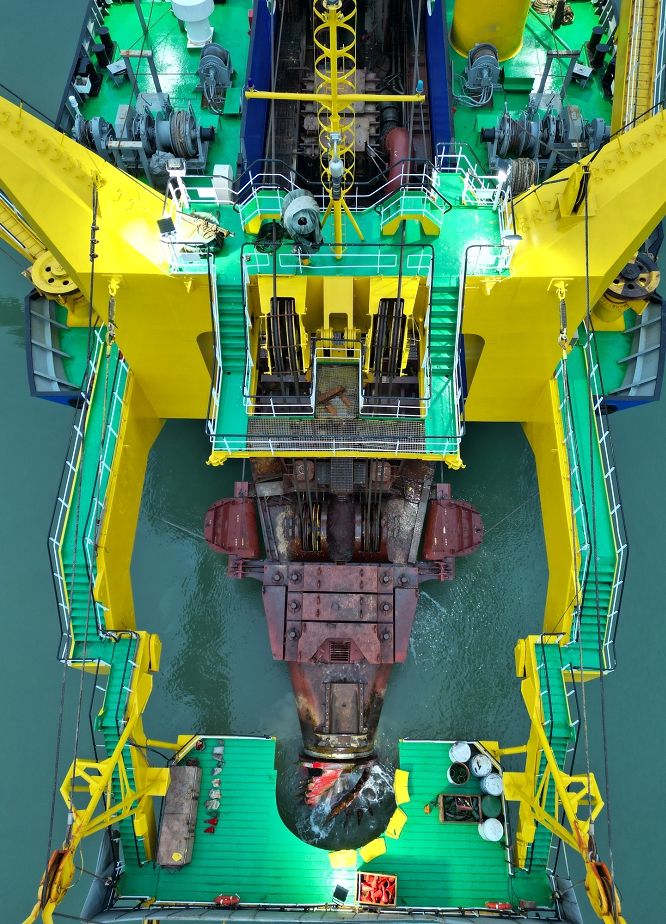
The reamer of Tianjing. Photo: Shi Ding/GT
"Many years have passed, and now the Tianjing is recognized by an increasing number of people, and Chinese engineers have also received praise from them," Dou Runbin, secretary of the Party branch on the Tianjing, told the Global Times. "Connection under the BRI has brought not only economic and trade exchanges, but also political and cultural exchanges between China and other countries in the world.""For us people onboard, we would like to see the development of port construction around the world and will make efforts needed," Dou said.
Many Tianjing crew members described their life and work on deck as "painful but happy."
"From the equatorial region to the Arctic, we have experienced fire and ice, but the biggest trouble might be food," Dou said. "In some places, vegetables are hard to get," he said.
Therefore, the crew started to try growing vegetables themselves. After much hard work, they harvested watermelons and chilis. "That was a happy moment to have some fresh greens on the Tianjing, a movable homeland," Dou said.
Today, the Tianjing has returned to China after successfully completing its assigned construction tasks along the Belt and Road over a period of five years, and has already devoted itself to the construction of new projects in China. In the future, the Tianjing will continue to write new stories along the "Belt and Road."
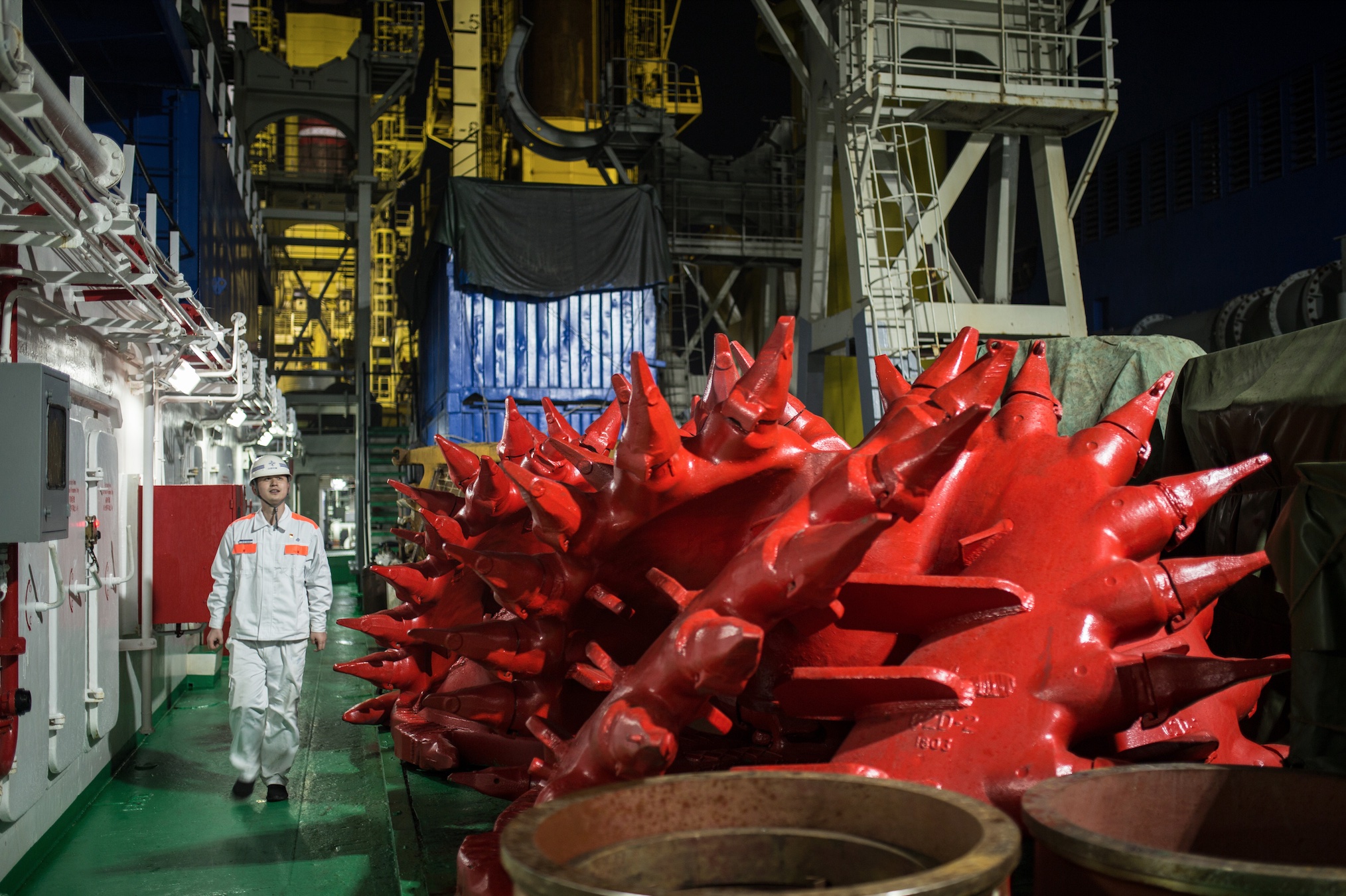
Crew members of Tianjing, or Sky Whale, a self-propelled cutter-suction dredger, are running the vessel during a task off the coast of Lianyungang, East China’s Jiangsu Province on January 14, 2023. Photo: Shan Jie/GT
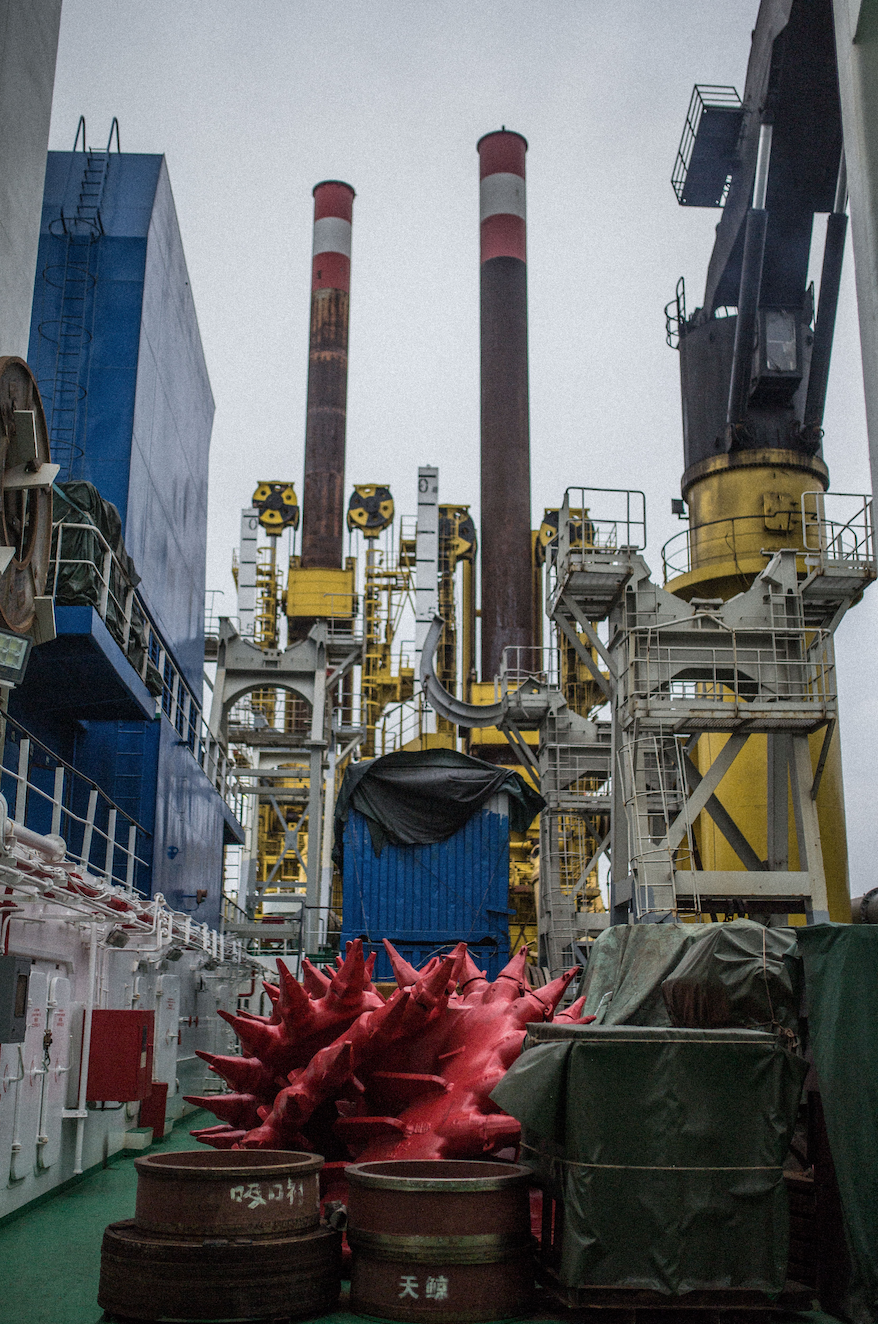
Crew members of Tianjing, or Sky Whale, a self-propelled cutter-suction dredger, are running the vessel during a task off the coast of Lianyungang, East China’s Jiangsu Province on January 14, 2023. Photo: Shan Jie/GT

